Food Photography & AI - Do We Want the Combo?
How have AI-generated images affected food photography? Do people prefer it or do we need food AI image detection to prevent it?
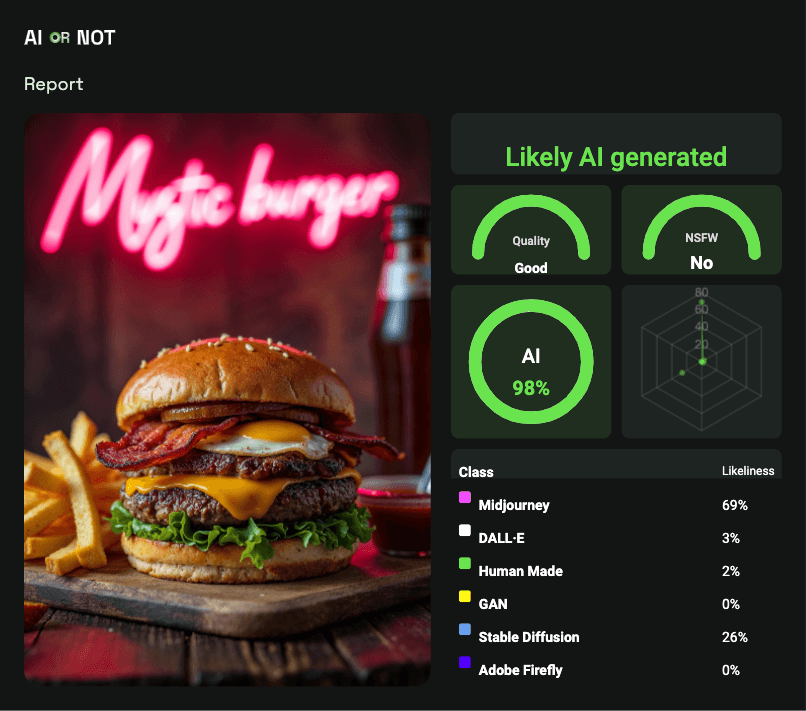
Food Photography & AI - Do We Want that Combo?
Scrolling where to eat or order from is our favorite pass time other than doom scrolling and deciding what to watch next on Netflix.
Large, close-up images of what we're about to eat has been how we made this decision. One thing we have taken for granted is not having to think about is if the food pic is real or not. Til now, that is.
Introduction to Food Photography
Food photography is an art form that tells a story, evokes emotions, and brings out the best in culinary creations. Whether you’re a professional chef, a food blogger, or simply someone who loves to share their meals on social media, food photography style can make a homemade plate look like professional food.
You're scrolling through your social media feed when suddenly, an image stops you in your tracks. It's a mouthwatering close-up of a perfectly seared steak, glistening with juices and adorned with vibrant herbs. Your stomach growls, and you find yourself reaching for your phone to make a dinner reservation.
But what exactly is food photography?
Its the art of capturing food in a manner that not only highlights its visual appeal but also conveys emotions and stories. It's about transforming a simple plate of pasta into a sensory experience that viewers can almost taste through their screens.
Food styling can do more than just make someone hungry—it can communicate the texture, aroma, and flavor of a dish, all in a single overhead shot. The right food photograph can make the difference between a forgettable image and one that compels someone to like, share, recommend buying or try the recipe themselves.
Every dish has a story to tell: whether it’s a rustic loaf of bread fresh from the oven or a colorful salad with seasonal ingredients, and food shots aim to do it.
Guide to Food Photography
A great food photo can make mouths water and inspire culinary adventures, a poor one will keep everyone scrolling on. Here are some food photography tips to make your next food pic really pop:
Lighting is Everything: The best light for food photography is natural light. Set your dish near a window or in a spot with plenty of natural light to avoid harsh shadows and the unpleasant effects of artificial lighting. If daylight isn’t an option, use softbox lights or a diffuser to create a soft, even glow that brings out the food’s true colors and textures. Experiment with shutter speed and aperture of your dslr to get it just right, or even shoot in raw format for the highest quality (and largest file size!) pictures.
Focus on Composition: How you arrange the elements in your shot matters. Use the rule of thirds — place the main subject slightly off-center for a more interesting composition. Experiment with angles before your point and shoot; a top-down view works great for dishes with intricate patterns, while a side angle might better showcase the layers and height of something like a cake. Don't be afraid to use a tripod to help.
Mind Your Background: The background of your photo should complement the food, not distract from it. Simple, neutral backgrounds work best, allowing the dish to take center stage. Wooden tables, marble countertops, or plain tablecloths are popular choices that add texture without overpowering photos of food.
Add Props Thoughtfully: Props like cutlery, napkins, or ingredients used in the dish can add context and enhance the story you’re telling. However, it’s important not to overcrowd the frame. Every element in the photo should serve a purpose and guide the viewer’s eye toward the main subject—the food.
Edit with Care: Photo editing, with tools like Adobe Lightroom or Photoshop, can improve your food images, but it’s important to keep it natural. Adjust the brightness, contrast, and saturation to make the colors pop, but avoid over-editing. The goal is to enhance the food’s natural appeal, not to create an unrealistic image; when in doubt, post your photo without!
Does Generative AI Help Enhance or Hurt Food Photography?
Generative AI can create photorealistic images of food that may not be easily captured through traditional photography without much effort. For example, AI can generate images of dishes that don’t yet exist, providing visual content for conceptual recipes or futuristic food trends. This opens up new creative possibilities for food bloggers, marketers, and even chefs who want to visualize their ideas before putting a pan on the stove.
One concern is the potential for AI-generated images to overshadow genuine, real food photography. As AI becomes more advanced, telling the difference between real and AI generated images could become difficult, potentially diminishing the value of a professional food photographer.
Another issue is the ethical implications of using AI in food photography. There is a risk of misleading audiences if AI-generated images are presented as real, which could erode trust, particularly in marketing and advertising contexts.
AI Food Pics ftw
Here are some examples of AI food:
Burger (via Mystic)
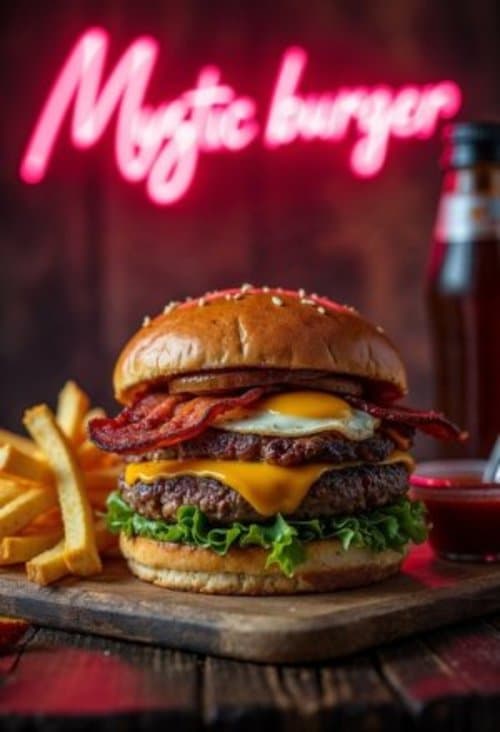
Steak (via Ideogram)
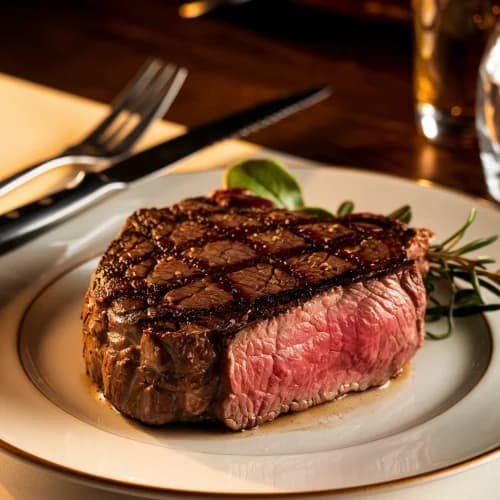
Pizza (via Mystic)

Salad (via Midjourney)
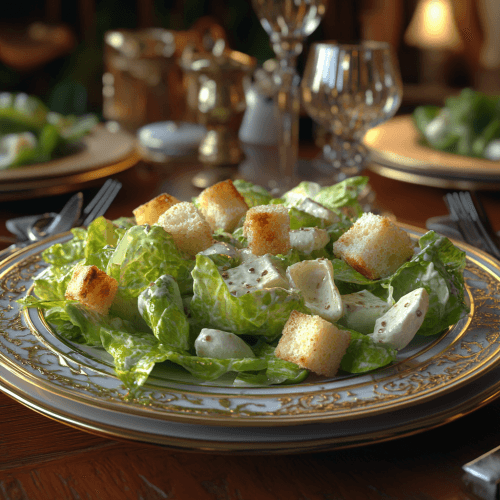
Fruit (via Dalle)
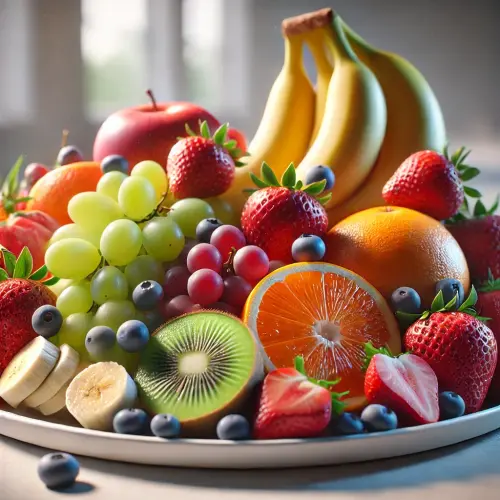
Pause: snack time!
BREAKING: People Prefer AI Generated Food Pics
In a study that would make any Instagram influencer smash the like button, researchers discovered that people generally prefer AI-generated food images over real ones, especially when they don't know the image's origin. It turns out that AI has a knack for hitting all the right visual cues that make food look downright delectable, though not AI detectable.
In a study involving 297 participants, when people were unaware of whether an image was real or not, they consistently rated AI-generated food images as more appetizing.
AI excels at know how make that plate of food look good enough to eat right off the screen. Anyone can currently us AI to create images that have perfect symmetry, ideal shapes, just the right amount of glossiness, and lighting that would make any expensive equipment look amateur.
It also knows to add an extra bit of of whipped cream to that dessert or overflow the fries, playing right into our evolutionary drive for energy-dense foods. And no need to worry about angles with or photo props that photographers use – AI subtly positions food items just right turning something that may be actually unappetizing to perfect food, at least by the looks of it.
Leading Companies Banning AI Food Photos
In recent months, several food related marketplaces' Trust & Safety teams have started to ban the use of AI-generated food photos, citing concerns over authenticity, consumer trust, and the impact on their brand image.
One of the most notable examples is Zomato, a major food delivery platform in India. Zomato CEO Deepinder Goyal announced that the company would remove AI-generated food images from its platform following numerous customer complaints. Users reported feeling misled by AI-generated images that often portrayed food in an unrealistic or overly stylized manner, which led to dissatisfaction when the actual dishes did not match the photos. Goyal highlighted that this discrepancy not only breached consumer trust but also resulted in increased complaints, refunds, and lower customer ratings. As a result, Zomato has urged its restaurant partners to avoid using AI-generated images and has committed to removing such content from their platform.
Zomato is not only removing existing AI-generated images but also urging their restaurant partners to avoid using AI for dish images in menus. To support this transition, Zomato is offering professional food photography services to restaurants, ensuring they have access to high-quality, authentic food pics without reliance on new technology.
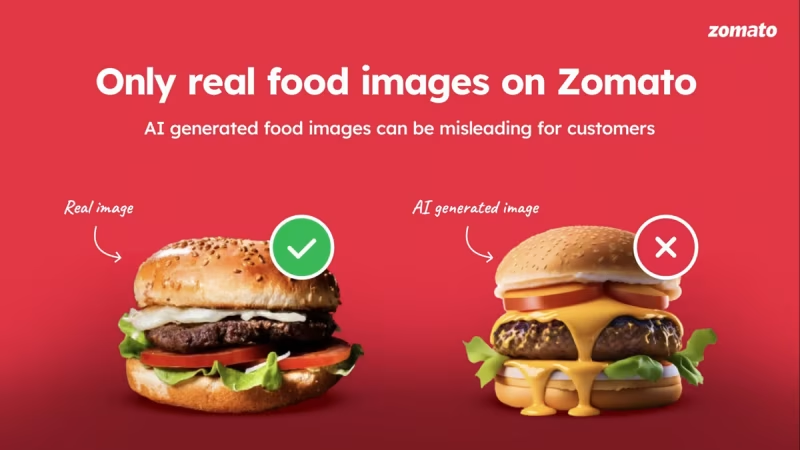
Instacart, a leader in online food delivery in the US, faced similar backlash after Business Insider exposed the company's use of AI-generated food images. The AI-generated photos, which included bizarre and unsettling compositions like conjoined chickens and hot dogs resembling tomatoes, quickly became a source of consumer frustration. In response, Instacart began quietly removing these AI-generated images from its website. While the company initially used AI to reduce costs and speed up content creation (sound familiar!?), the negative reaction from customers has led to a reevaluation of this approach
These moves by industry leaders highlight a growing concern about the impact of AI-generated imagery on consumer trust and satisfaction. While AI can create visually appealing images, it often fails to accurately represent the actual food looks like, leading to disappointed customers and potential damage to a company's reputation.
Food Pic Integrity with AI Detection
While AI-generated food images can be visually stunning, it does raise red flags about authenticity and trust. This is where AI detection can ensure integrity by distinguishing between real and AI-created images while helping Trust & Safety teams not having to manually review images from scratch.
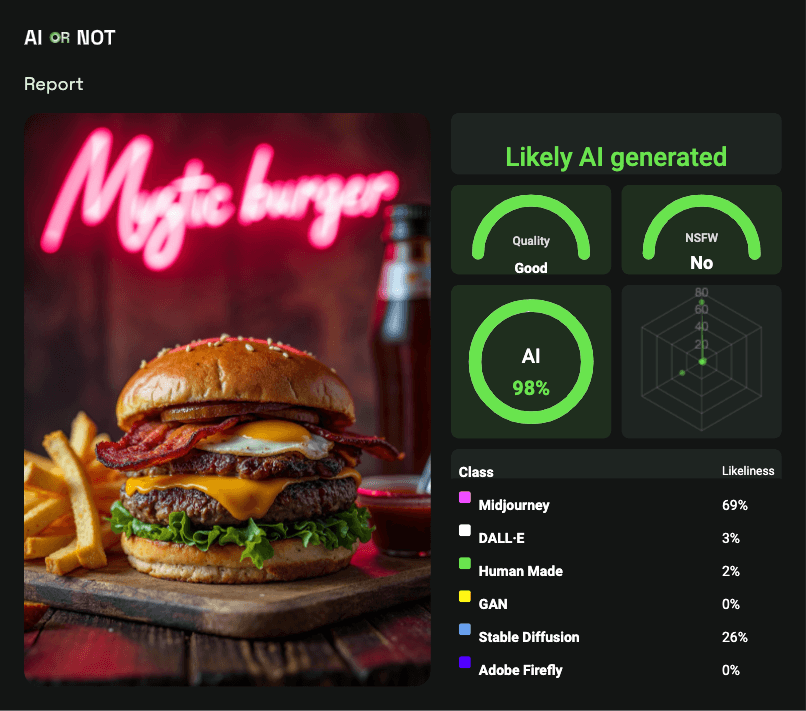
Visuals play a central role in marketing and consumer decision-making, more than ever before. We all rely on photos to set our expectations. When AI-generated images present a perfect version of a dish that doesn't match what you irl, it can lead to disappointment and a breach of trust. This is especially problematic for online food delivery platforms, where customers expect the food they order to resemble what they see in the images; crazy concept huh!
AI image detection for food photography works by analyzing subtle patterns and inconsistencies that are often invisible to the human eye. These systems can identify signs of AI generation, such as unnaturally perfect symmetry, impossibly consistent textures, lighting that defies the laws of physics, or subtle patterns of AI that a human can not; even as models improve by the day, computer vision can still detect what human vision cannot. By checking for AI in these images, AI checkers can help maintain transparency in food advertising and social media.
Though on the surface, AI generated images of food will get more immediate positive responses: likes, thumbs up and even orders. Over time, people will realize what they're actually interacting with isn't real. And that will have a negative effect on trust and businesses alike.